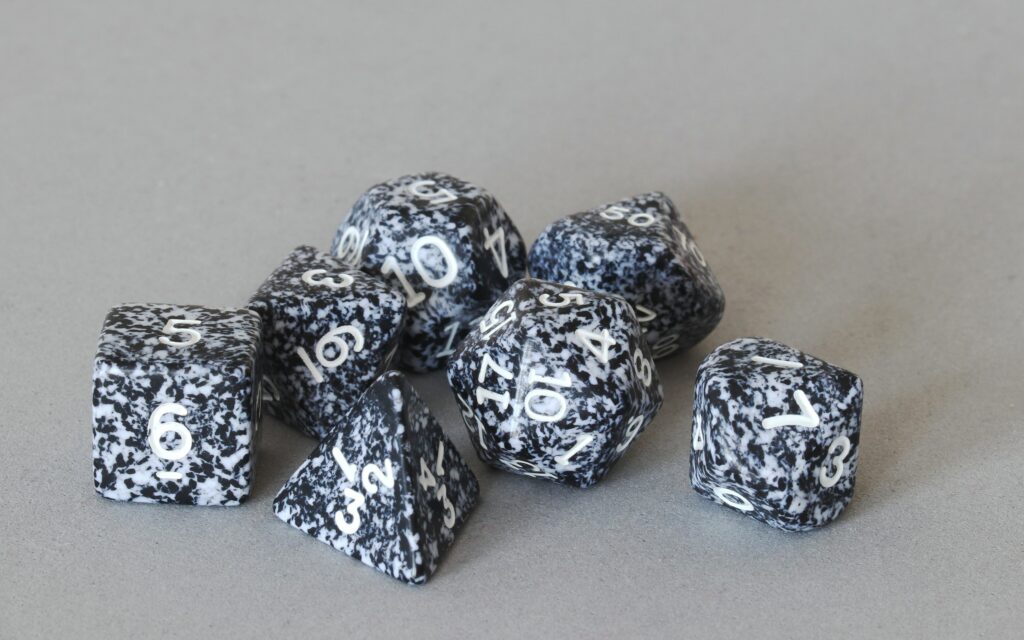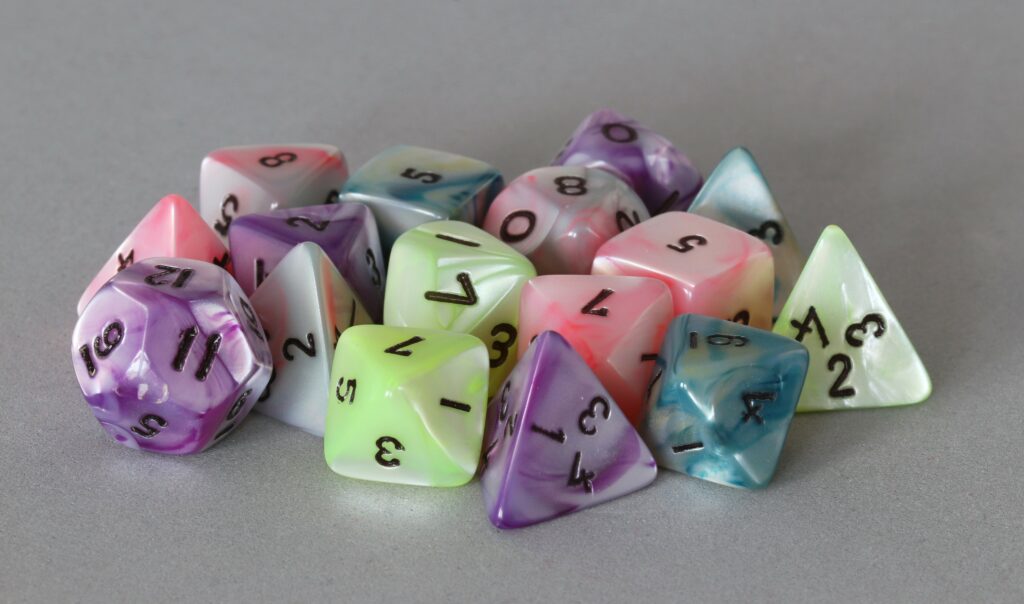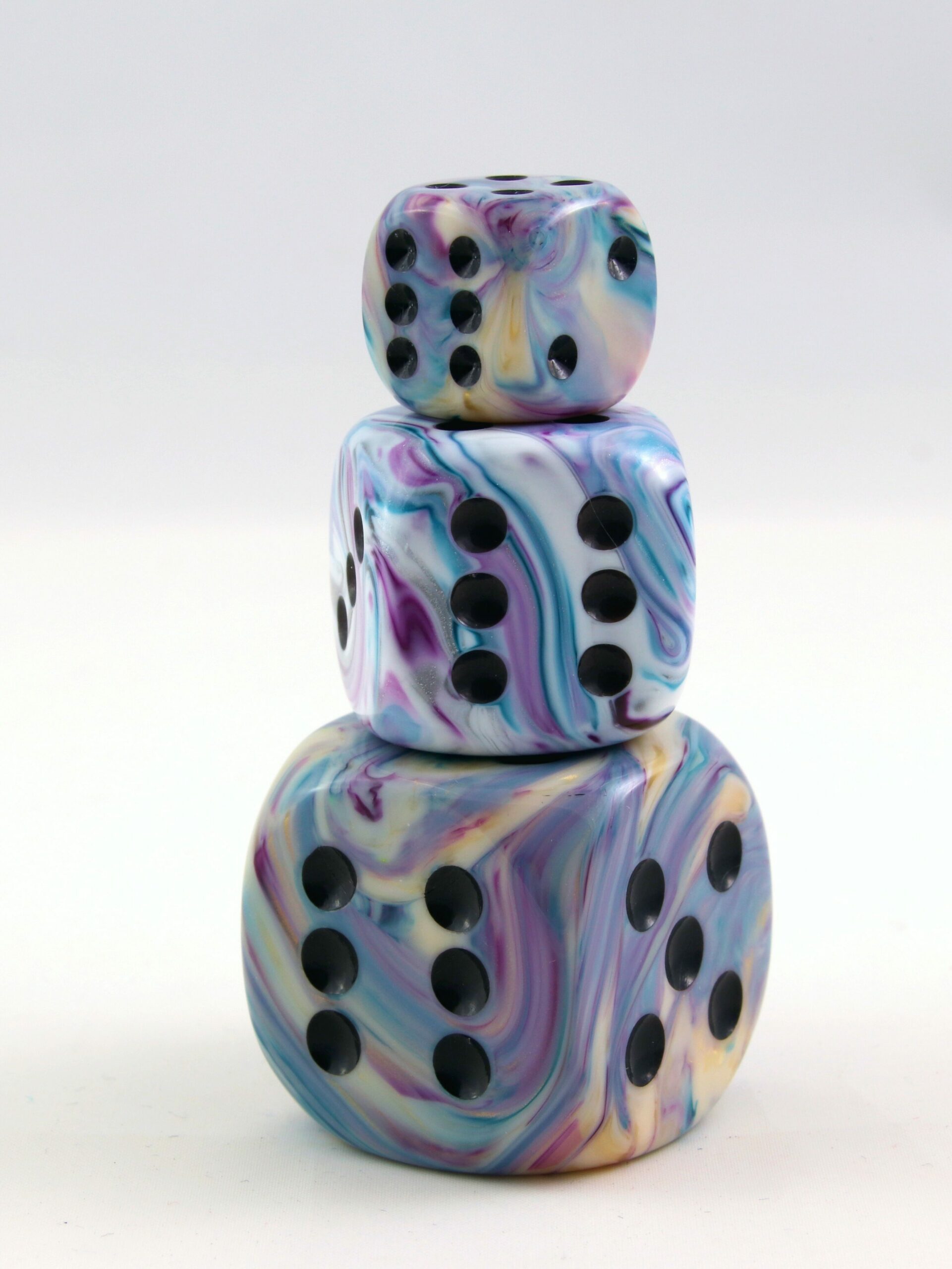If you’ve been in the dice collecting community for a while, you might know that collectors sometimes give things names in order to tell certain dice apart that may look very similar or just to have a name for something specific that wasn’t quite disguished in that way by the company who made the dice.
There are several such names floating around, and some aren’t always very intuitive when you look at how the companies who sold the dice were naming them.
Crystal Caste Magma vs. Spectrum
The first such line I’d like to talk about is what dice collectors call Crystal Caste Magma. Technically, this is a misnomer since Crystal Caste never sold a line they called Magma. When Crystal Caste was still selling these dice, they were sold under the name Spectrum in five different colours: Blue Smoke, Green, Purple, Red and Amber. D&G made and sold them as D&G Magma in the same five colours but named somewhat differently: Smoke, Green, Blue, Purple, Amber.

This is obviously confusing since there’s now two different names for the same dice, including associations of the same colour to different dice (Magma Purple = Spectrum Red, Magma Blue = Spectrum Purple). At some point, collectors somehow decided that these dice would go by the name of Crystal Caste Magma, combining the Crystal Caste brand name with the D&G dice design name, so if you hear Crystal Caste Magma, then you should know that these are actually Crystal Caste Spectrum, respectively D&G Magma.
Another somewhat confusing aspect is that collectors often call the CC Spectrum Red/D&G Magma Purple dice Magma Royal. I haven’t been able to find out where the “Royal” name came from since neither Crystal Caste nor D&G sold them under that name. It may just be something that a collector made up at some point and it got picked up and repeated by enough people to become a thing. And yes, this frequently happens in the dice community. Apparently, we like to make up names. Or maybe it’s a manifestation of the Mandela Effect. 🙂
Crystal Caste Gold Mist vs. Ancient
This is another somewhat confusing distinction that doesn’t match with how these dice were sold. I am not 100% sure about this since there really isn’t any documentation that I could locate about it, so I’m happy to be educated otherwise if someone has more accurate information, but this is what I have been able to find out.
The dice that collectors label Gold Mist (semi-translucent material with golden pigment more or less evenly spread throughout the dice) and those collectors label Ancient (semi-translucent material with distinct golden swirls) were sold by Crystal Caste under the name Ancient and by D&G under the name Gold Mist. Neither Crystal Caste nor D&G made a distinction between Gold Mist and Ancient, they called both design variations Ancient (Crystal Caste), respectively Gold Mist (D&G).
It is thought that the design variation difference is a change made over time, where the one collectors call Gold Mist was produced first, and at a certain time there was a switch to the design variant that collectors call Ancient. Irrespective of the variant, Crystal Caste would have all called them Ancient, D&G Gold Mist. There were also rebranded versions in Europe, e.g. Pegasus Games Gold Mist (which were actually in the Ancient variant for the red colour).
Some of these variants underwent not only a slight design change in terms of making the gold pigment swirlier, there was also a visible shift in the colour hue for the red and the purple versions, so that both the Ancient Red and the Ancient Purple variants look distinctly darker than the Gold Mist variants. It is thought that the orange colour only exists in the Gold Mist variant and was discontinued prior to the switch of the Ancient variant.
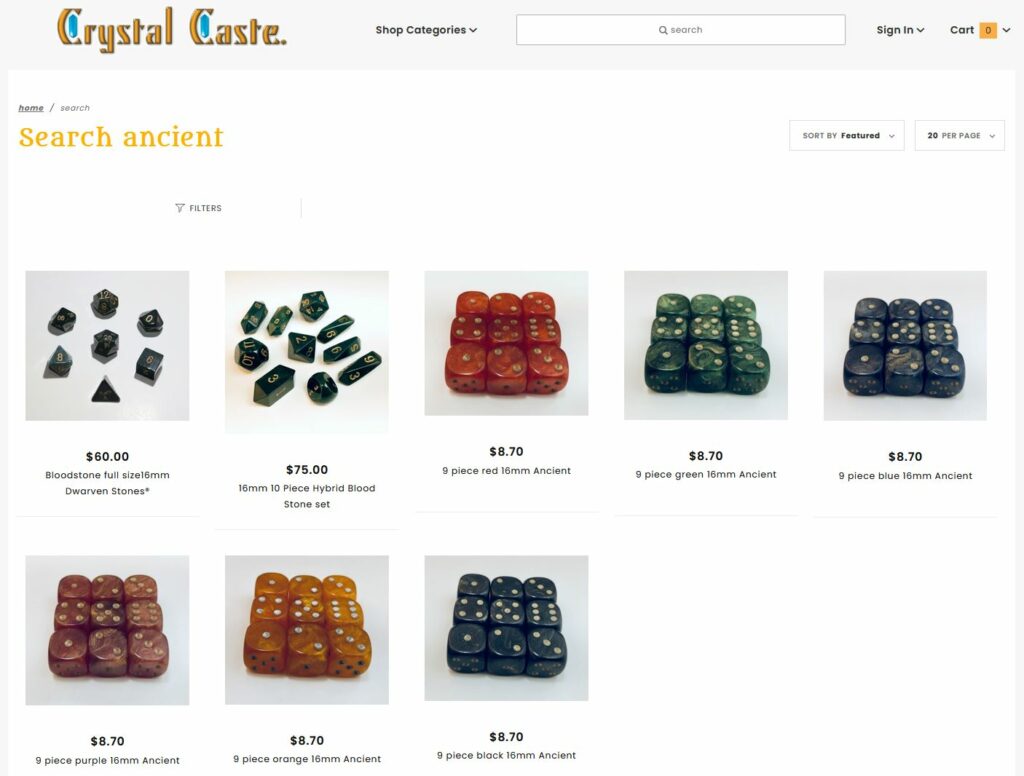

Collectors with a keen eye may have noticed that there aren’t just colour variations, there are also different moulds for these dice. Most prominently, the d20 can come in a version where there’s a 14 below the 20, or a version where there’s an 8 below the 20. There’s no documentation about this that I’m aware of, but it has been said that the version with the 14 below the 20 is older than the one with the 8. It’s unclear whether these moulds were use in parallel for a certain time or if there was a clear cut-off date for the mould switch.
From what I’ve been able to tell, the naming distinction between Gold Mist (visually more misty) and Ancient (visually more swirls) originated around summer 2018 in the Dice Maniacs’ Club Facebook group where it was mentioned in different comments on dice ID posts by different people, but I haven’t been able to find any one specific source for who started deciding on this distinction. It was picked up by others and spread around so that it became a commonly accepted fact among collectors that is still being used today.
If you want to know more about how to tell the dice classified as Ancient from those called Gold Mist, please check out this separate reference guide.
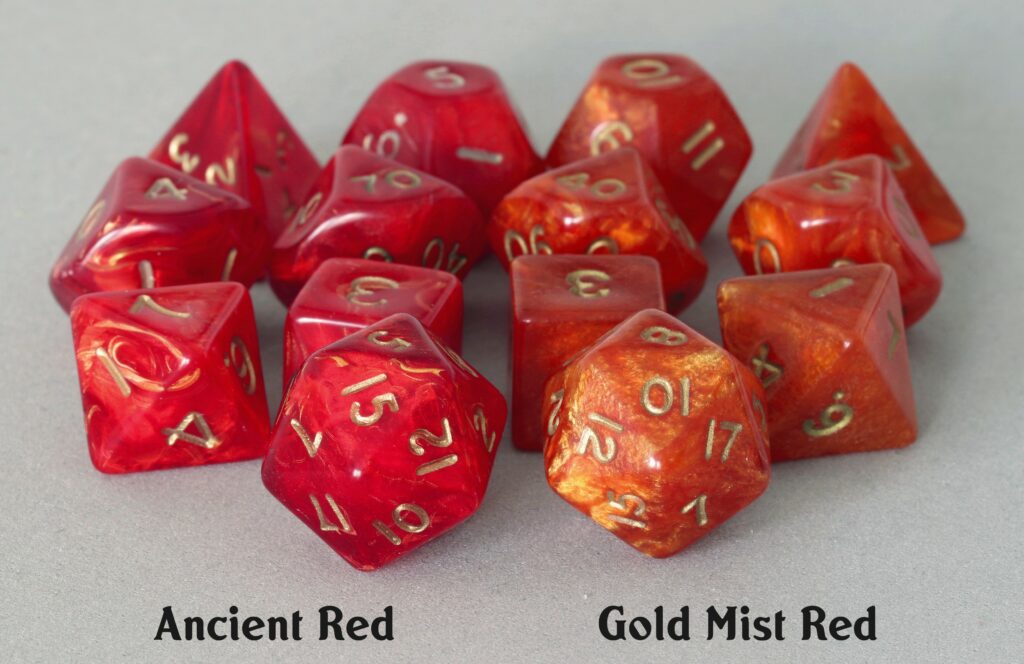
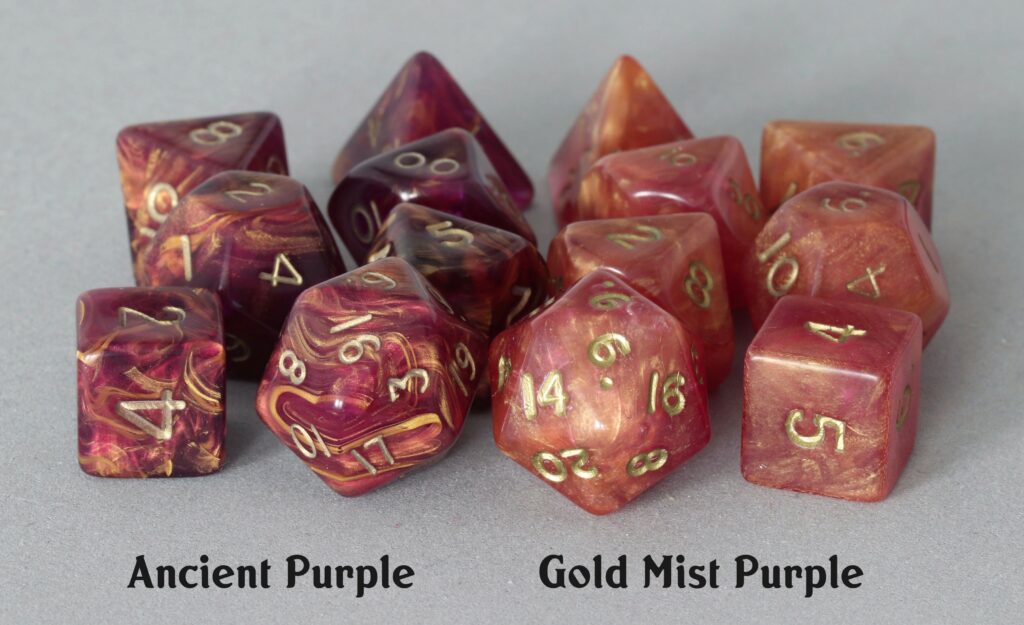
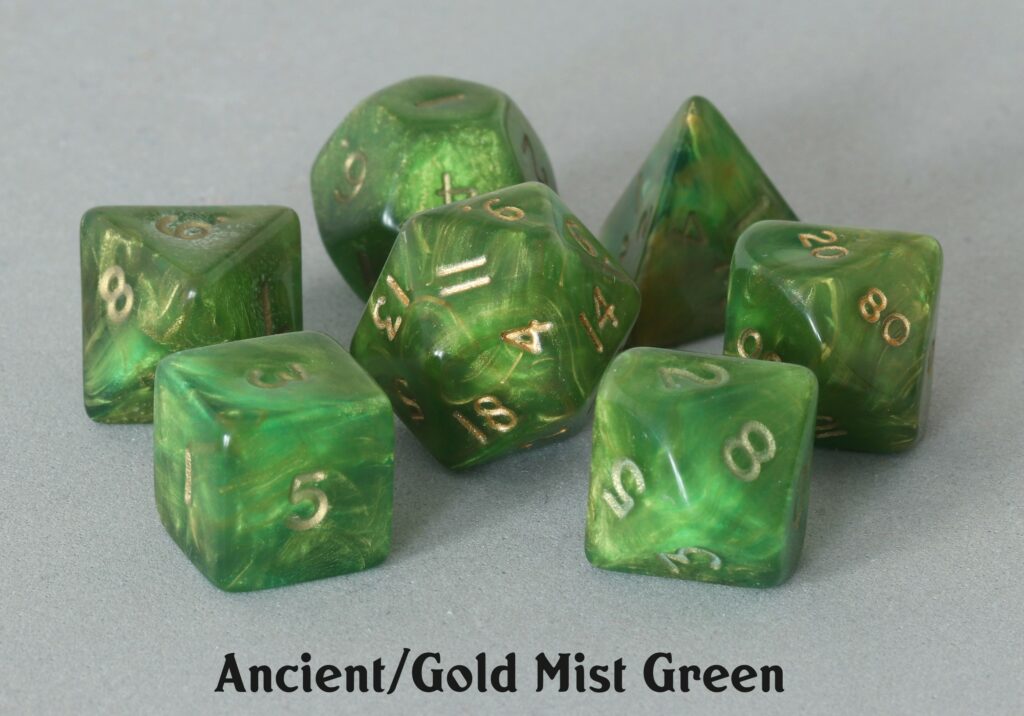
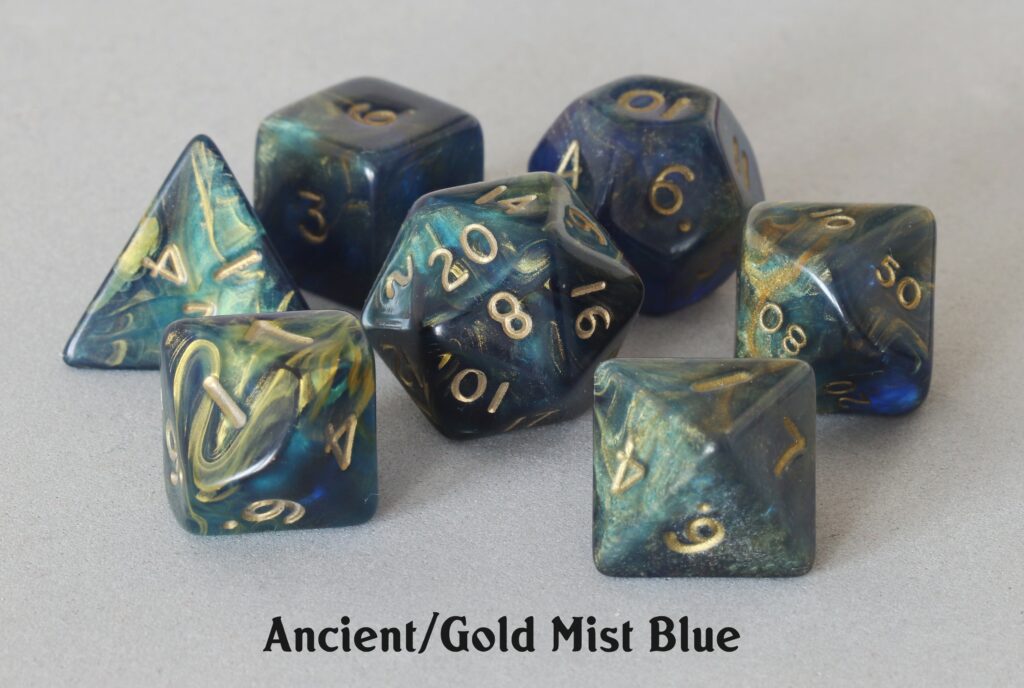
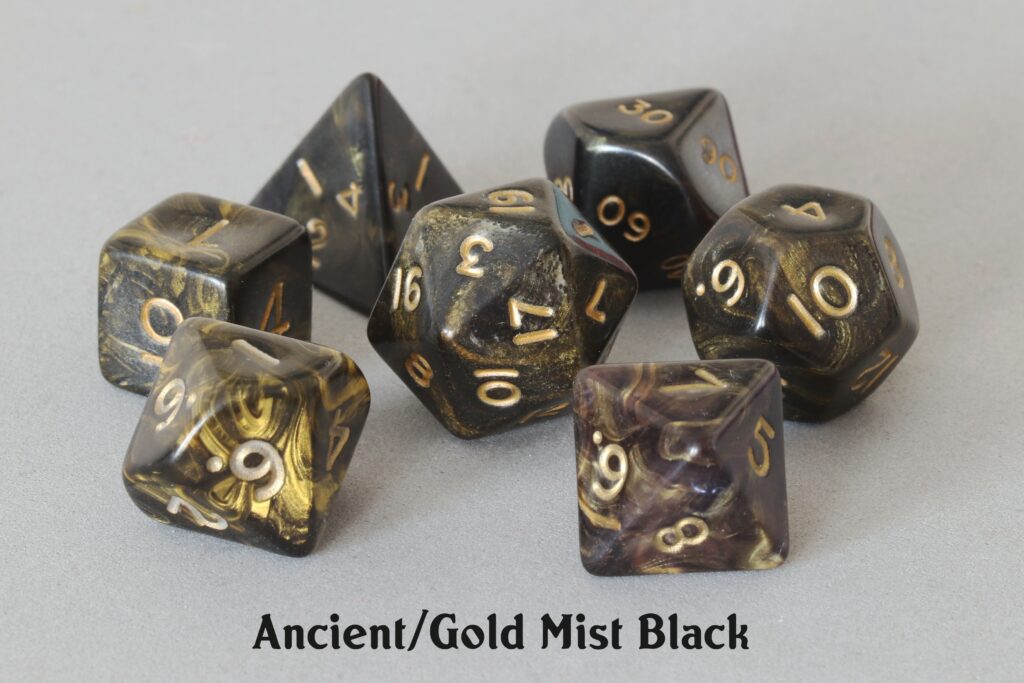
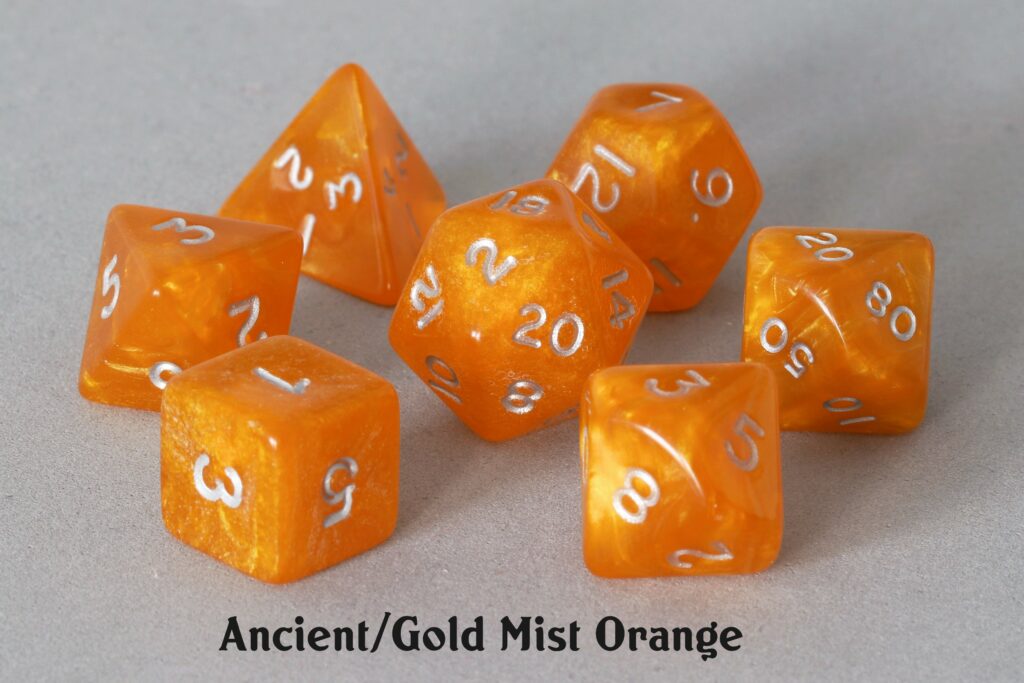
Crystal Caste Silk vs. D&G Marble
This one is a bit of a conundrum and something that confuses dice collectors, because technically Crystal Caste Silk does not equal Crystal Caste Silk. Let me explain.
The dice that collectors call Crystal Caste Silk nowadays are those that Crystal Caste sold under that name many years ago, made by the German acrylic factory in in the mould that some people call “old German mould”. It’s the same one that was being used for the Ice Cream, Porcleain and Satin lines.
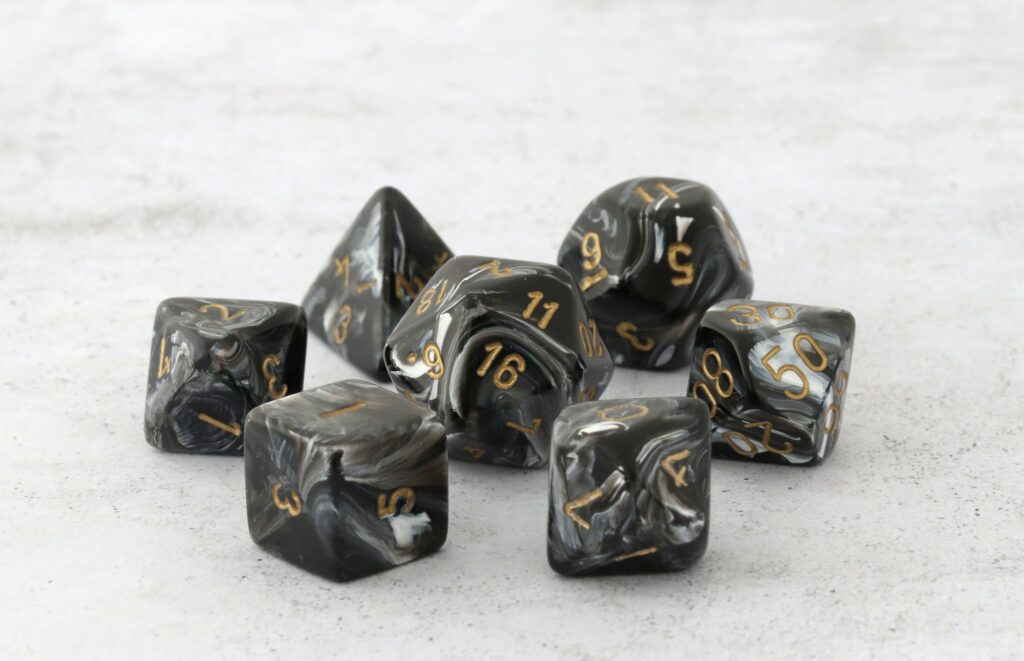
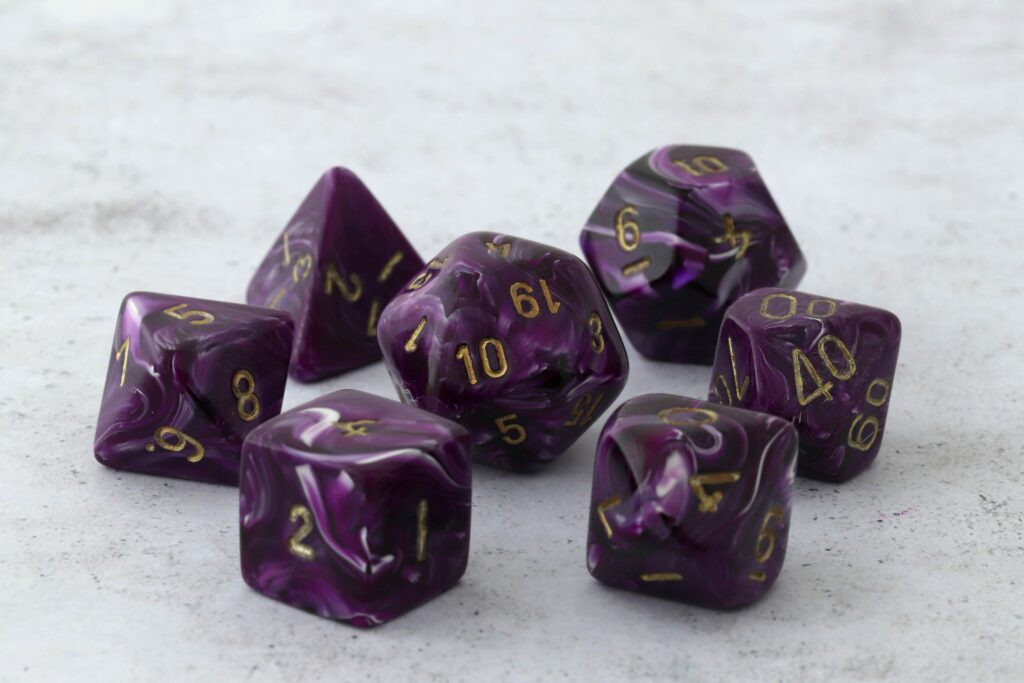
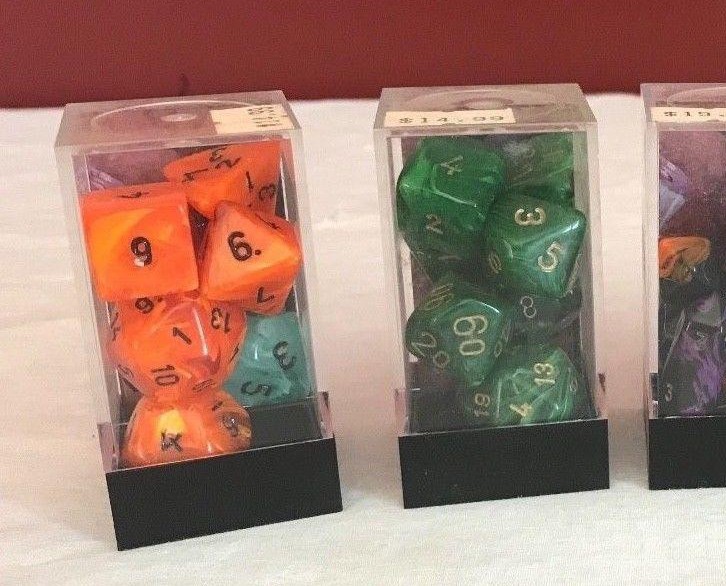
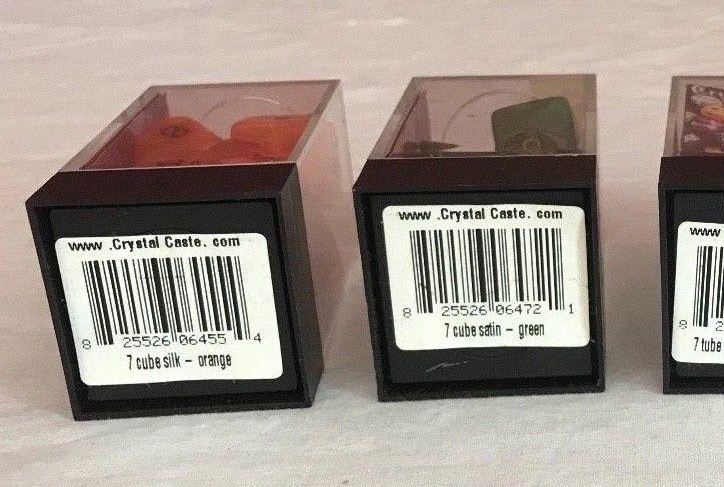
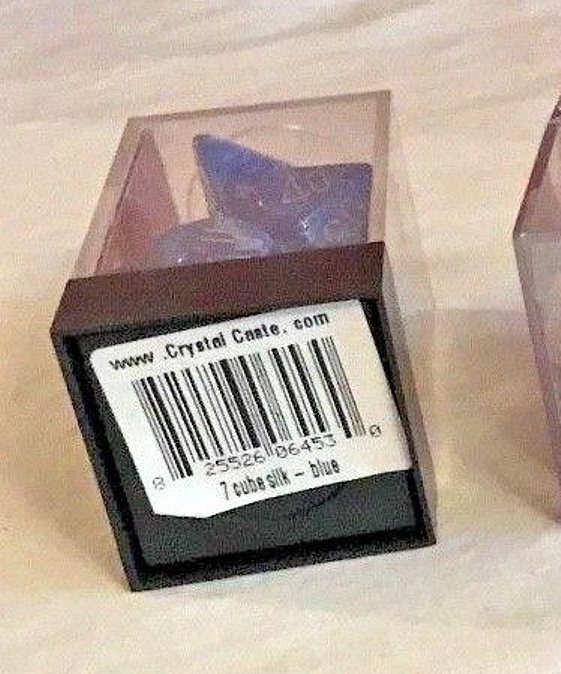
The interesting part is that Crystal Caste actually also sold the dice that collectors call D&G Marble under the name Silk at some point, most likely after the German factory stopped making the old Silk line and Crystal Caste switched these over the dice that D&G themselves sell as Marble. If you’d like to know more about how the old Silk line differs from Marble, take a look at this reference guide.
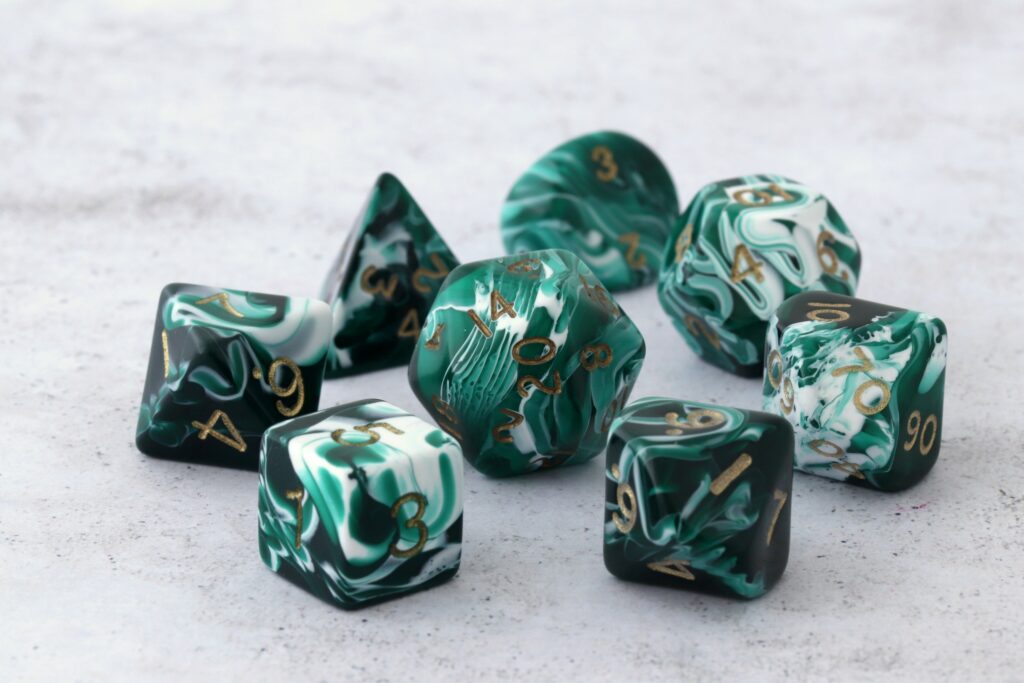
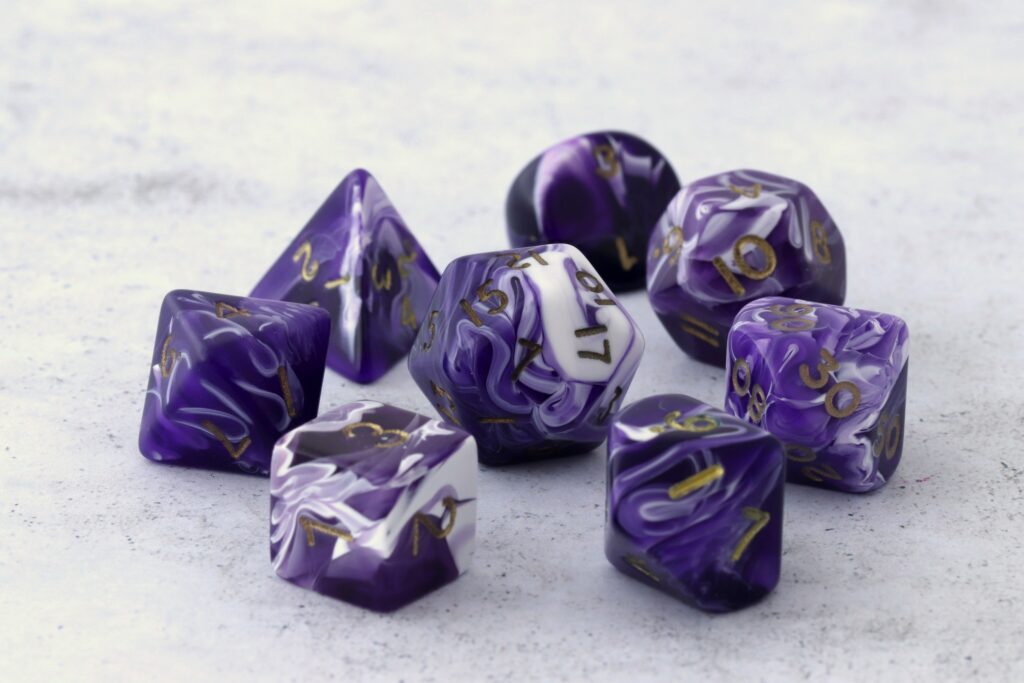
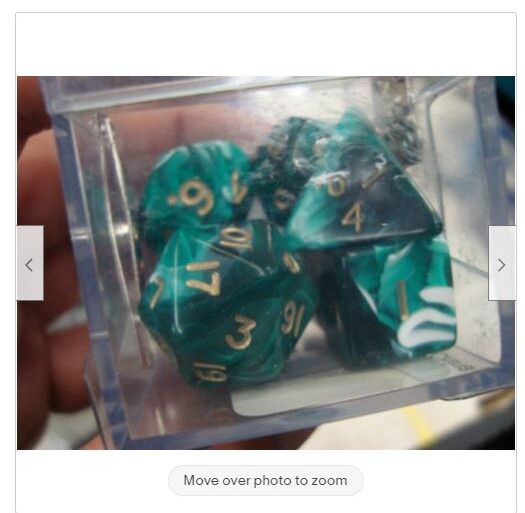
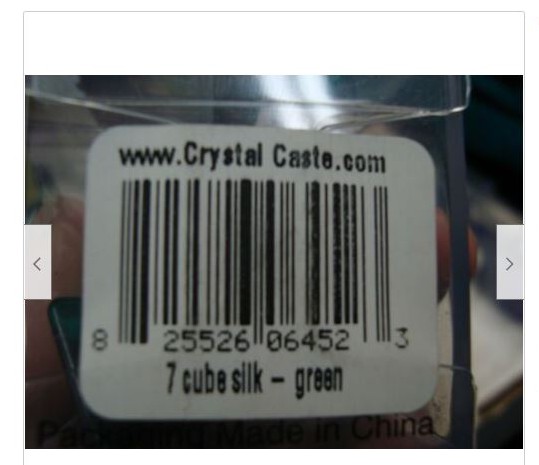
Koplow Two Toned vs. Duo
There’s also a naming conundrum attached to the Speckled dice that were made in the mould that’s specific to Koplow. The official name as per Koplow catalogue for these is Two Toned, but collectors sometimes call them Koplow Duo or Koplow Speckled Duo, which is also a fan-made name and not official.
These dice are quite interesting in and of themselves, since other than the MtG spindowns in a Speckled design, to my knowledge, they’re the only non-Chessex mould Speckled dice made out of urea out there, and they are not made by the same factory that produces urea Speckled dice for Chessex.
Koplow Two Toned come in the colour combinations black-white (Black), red-white (Red), green-white (Green), blue-white (Blue), purple-white (Purple) and green-blue (D. Green).
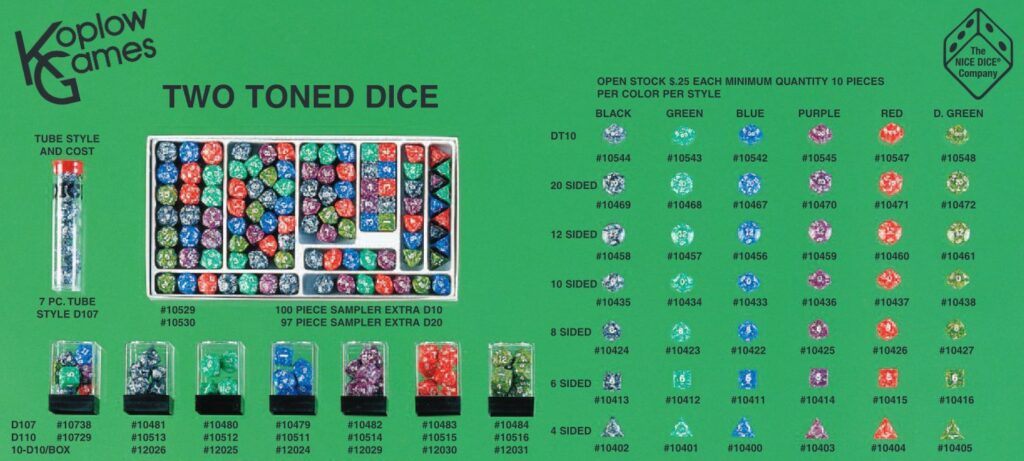
King Cards Rainbow vs. Highlighter
German dice brand/distributor King Cards carried a line that seems to have been exclusive to them called Rainbow. They’re silvery dice swirled together with one other colour, available in several different colours such as teal, pink, purple, yellow and a teal-pink variation.
Some collectors have coined the term “Highlighter” for these dice since some of the colours resemble those of the typical highlighter pen colours, although King Cards never officially called the dice that. They are only ever listed in the King Cards catalogues as King Cards Rainbow. (Who knows why, they don’t actually resemble a rainbow or the typical rainbow colours.)
Polysets are known to exist as 6-die sets (no d%) in neon pink, neon yellow, purple, teal and a more muted pink-teal. 16mm pips have also been seen in other colours such as a darker purple, navy blue, salmon or apricot and green.
There’s another King Cards Rainbow variant that’s swirly which is sometimes called “Blueberry” by collectors, others call it “Swirl” or “Swirly”. There’s no official name for these. They come in two variants — a more yellow-golden version and a cooler toned white-silver one. Polysets are known to exist for the yellow-golden version, although I’ve also got a d20 in the white-silver design.
King Cards Pearl vs. D&G Olympic
Many collectors are familiar with the pearly dice in the D&G mould that are universally called King Cards Pearl. These come in at least 13 colours, perhaps more. Collectors have started calling all these King Cards Pearl, even though King Cards probably didn’t sell all of these colour variants.
Thare are also three variants that King Cards didn’t actually sell — gold, silver and bronze. These were made as a limited run with an Olympic theme by D&G (confirmed by D&G via e-mail). Not sure under what name they were sold as, so I tend to label them D&G Olympic. When collectors talk about King Cards Pearl Gold, Silver or Brown, they most likely mean these three variants.
Colours that are confirmed as actually having been sold by King Cards as per their calalogues are orange, dark green, lavender, bright red, blue, black and white. Since King Cards mostly distributed their dice in Europe and the same dice are relatively readily available via the second hand market in the US, we need to assume they were sold there by other brands than King Cards, possibly Koplow in the early days of RPG dice.
So in that sense, calling all these colours King Cards Pearl is also technically incorrect, but done so for convenience and lack of better information of who sold what colour under what name.


Frequent Misspellings
There’s a number of dice names or brands that are also often misspelled or misnamed, these include
- Kaplow (correct spelling: Koplow)
- Chessex Borealis Aquapurple or Aqurple (correct spelling: Aquerple)
- Chessex Borealis Light Purple (correct name: Borealis Purple)
- Chessex Speckled Dalmation (correct spelling: Dalmatian)
- Chessex Lusterous (correct spelling: Lustrous)

